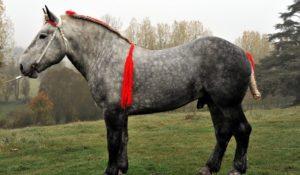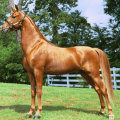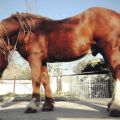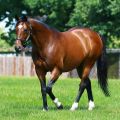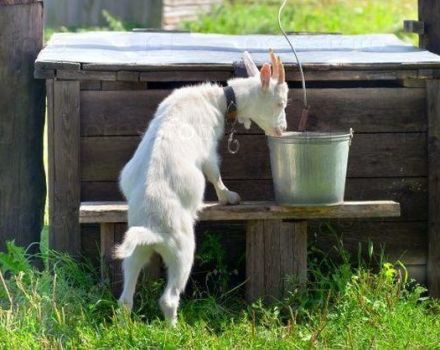What does a horse amble and the best breeds mean, features of such horses
Fans of history books and films are sure to know exciting stories about the adventures of brave warriors. Perhaps not a single story is complete without the participation of a faithful pacer horse. Legendary horses served their masters faithfully. The famous smooth gait and endurance of the stallions greatly facilitated human life. Unusual animals are popular in our time. This is not surprising, the pacer is a wonderful horse.
What is amble?
Amble is an unusual way of moving a horse. In this case, the front and hind legs, located on the right side of the animal, first come into motion, and then the limbs in the left side are synchronously rearranged. The pacing differs from the traditional cross gait, in which the horse throws out the right front leg and then the left hind leg forward, repeating the maneuver with the second pair of limbs.
In nature, there are animals that move in such a "parallel" way. If you look at a toiler-camel or giraffe, you can see the same amble. The gait protects the limbs of these animals from accidental interlocking of the hind and fore legs. Nature itself has provided a way to prevent injury in long-legged creatures.
The horse story is a little different. The culprit of the unusual phenomenon turned out to be a mutating gene responsible for coordinating the horse's movements. Some horse breeds have an innate ability to amble. In some cases, horses are artificially taught to "parallel" the course.
Distinctive features of pacers
An unusual horse is hardy, and in the steppe conditions it is a real gift for the rider. Due to the peculiarities of the gait, the horse does not jump, but transfers its weight from one side to the other. Thus, the ride for a person becomes comfortable, and the horse tirelessly travels long distances, running up to 120 km in 24 hours. You can look at the running pacer endlessly. The beautiful, noble step of a horse is an unforgettable sight.
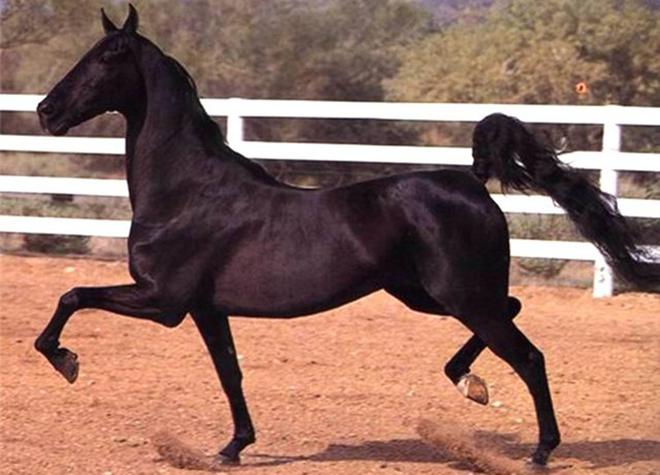
Unfortunately, horses cannot boast of agility and ability to maneuver. Clumsy animals are unstable and can only move freely in a forward direction. Any deviation from the route is difficult.
If you want to change the pace of the run, the horse will have to stop first. The stallion is not fit to carry cargo. In the role of a heavy truck, the horse gets tired quickly.
History of appearance
The latest research by scientists proves that the unusual horse first appeared in England. The first mention of horses dates back to the 9th century.Animals came to other countries of Europe and Asia thanks to the conquest of the Vikings. Warriors appreciated the ability of pacers to travel long distances under the saddle of a man. In addition, the ride on such a horse was comfortable.
Thanks to the amble, the horse transferred its weight from one side to the other, so the rider did not shake. However, during the battles, the Vikings switched to trotters - on the battlefield there was little sense from the pacers. Non-standard horses are extremely clumsy.

Merchants also had a hand in the distribution of non-standard horses. In those days, the horse was an expensive commodity. With the advent of roads, pacers were used less frequently. As transport people tried to use horses of trotting breeds.
Artificial rearing of pacers
The Americans were the first to do serious work on artificially rearing the pacer. Pragmatic breeders have found that the pacer's speed is superior to that of a normal racehorse. To achieve the result, the specialists crossed a Norfolk horse with an English stallion. The 19th century was marked by the birth of a bay frisky foal with the habits of a pacer. This is how a breed called standardbred appeared.
Work on raising pacers continues to this day. Despite the negative attitude towards amblers in European countries, American experts continue to work with enthusiasm on horse breeding. In the Soviet era, they tried to use amblers in competitions at Russian hippodromes, but this trend quickly died out. Unusual horses are welcomed in Asia and the Caucasus. In those parts, non-standard helpers are treated with gratitude and love.

Some experts have resorted to the harsh method of transforming an ordinary horse into a pacer. Metamorphosis occurs as a result of the use of special straps. The limbs of the horse are entangled in a certain way, in which the horse can only move by amble. This method is fraught with dangers for the horse. In a tied position, the horse can easily fall or get injured. In addition, the barbaric procedure inevitably leads to abrasion of the horse's limbs.
Breeds with an innate amble
Real pacers are very different from their "retrained" brethren. For them, a "parallel" gait is natural.
- The breed under the romantic name Peruvian Paso is deservedly loved by the local population. The animal is used as a riding horse, as well as for work in the field of agriculture. A small horse cannot boast of being tall, but it has a number of advantages. The Peruvian paso is harmoniously complex, and a real fashionista will envy the thickness and length of the mane. Strong hooves don't need hammering. The owner of strong legs moves with a special type of amble. The horse's hind legs make long, sweeping steps, and the front legs describe an arc. This way of running is termed by professionals.
- Cuban pacers are uniquely beautiful. A flexible, graceful neck, large expressive eyes and slender legs adorn the bay helper. The horse is used to participate in triathlon competitions and races. The horse does not disdain to work in the field of agriculture.
- Kyrgyz pacers have an unprepossessing appearance. Small pack animals can often be seen in the mountains. Pacers faithfully serve people, without requiring attention and special care. Horses make do with pasture all year round.
- Kazakh amble horses. Their ancestors served the invaders during the invasion of the Golden Horde. A hardy animal could ride tirelessly under the saddle of an armed warrior, leaving hundreds of kilometers behind. To transport goods, the horse was harnessed to a cart, and, if necessary, the horse became a source of meat and milk.
- Brazilian horse of the Campolina breed. The tall, short-legged horse has a powerful build. The hunchbacked strongman is an irreplaceable assistant for the owners of agricultural land. The animal is often used for long horse rides.

Curious facts
Unique horses have amazing abilities and never cease to amaze connoisseurs of the breed.
- In the vastness of Kazakhstan, pacers feel at ease. The locals' favorites often graze unattended at any time of the year. In winter, with the help of hooves, horses rake the snowdrifts and get food. Such a snowy "hunt", Kazakhs call tebenevka. Local pacers have an enviable frost resistance, they can easily withstand temperatures down to 45 degrees.
- In India, there are horse amblers called marwari. The horses are extraordinarily beautiful and graceful. A distinctive feature of the breed is the unique structure of the ears. The hearing of the Marwari is ten times stronger than that of other representatives of the equine kingdom. Animals are unpretentious, they are simply created for life in the difficult conditions of the desert. Horses graze on their own most of the time. They are perfectly oriented in any area and always return home to their owners.
Equestrian sports enthusiasts assure that the way a horse runs depends on the weight of the horseshoes. If the front horseshoes of the horse are much lighter than the hind ones, the horse will immediately turn into a pacer.
